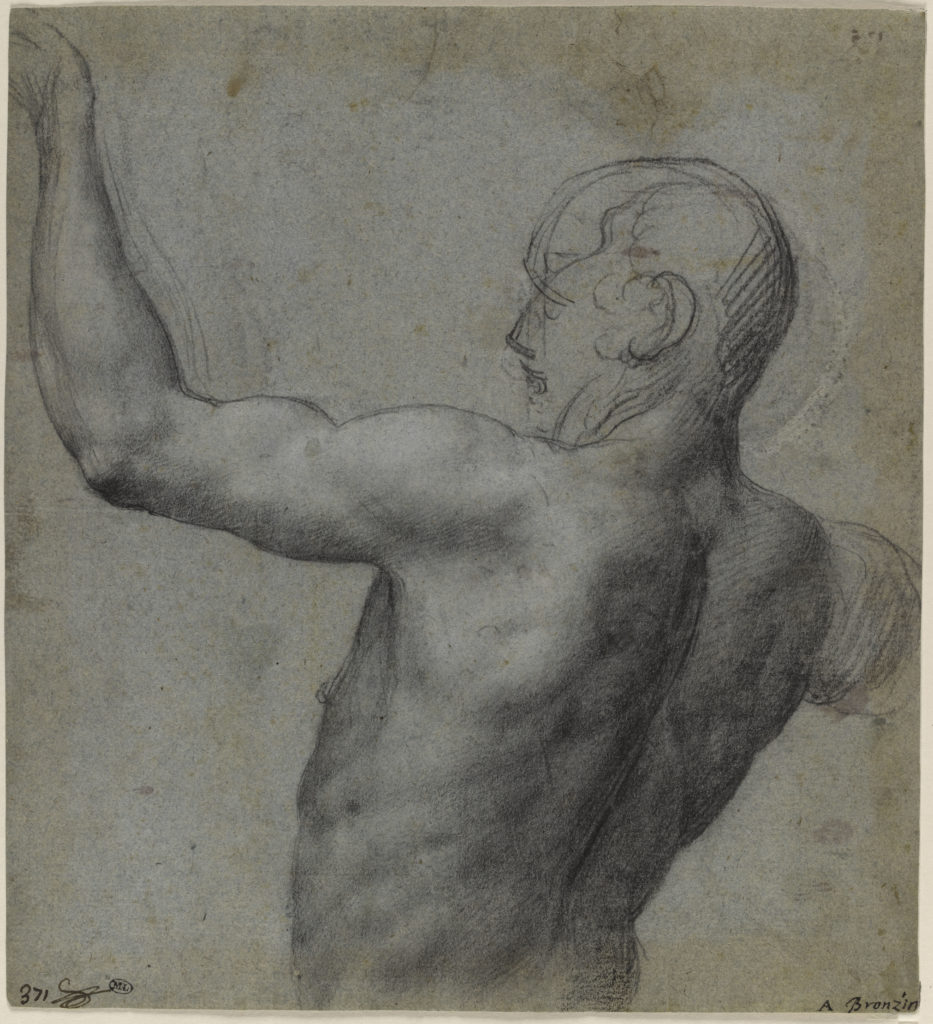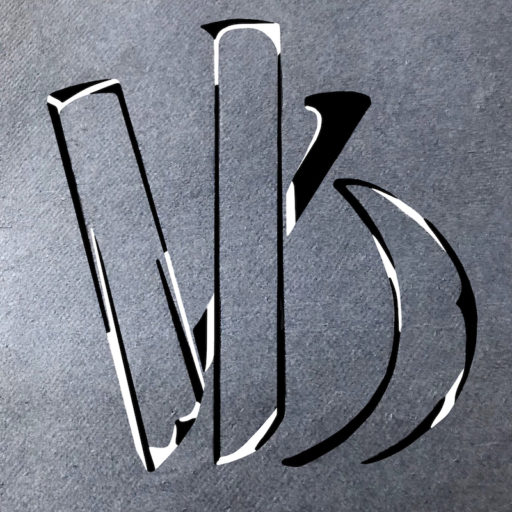
Artist | Battista Franco (ca. 1510-1561), formerly attributed to School of Agnolo Allori (Bronzino) (1535-1607)
Title | Half-Figure of a Nude Man Seen from Behind, Left Arm Raised
Date | First half of the 16th century
Medium | Black chalk, white heightening, stumping on blue paper
Dimensions | 231 x 211 mm
Institution | Les collections du département des arts graphiques, Musée du Louvre, Paris
Credit line | ©RMN-Grand Palais (musée du Louvre) / Jean-Gilles Berizzi
Theme | The Human Form
Museum number | 10921, Recto
Born in Venice in 1510, Battista Franco (ca. 1510–1561) was a renowned Mannerist painter and printmaker. Most of his drawn oeuvre is on neutral paper, and as Anne Varick Lauder has indicated, only six of the five hundred and fifteen extant authentic sheets are on inherently blue paper. Despite often signing his works as ‘Battista Franco Veneziano,’ Franco spent the majority of his career in Rome, having moved there in his twenties. While in Rome, Franco became fascinated by the paintings of Michelangelo (1475–1564) and often went to the Vatican Palace to study the recently completed Sistine Chapel ceiling (1512). Such influence can be seen in this figure study through Franco’s treatment of the muscular back, created by subtle shading using black chalk. Although Michelangelo was Giorgio Vasari’s (1511–1574) consummate draughtsman, Vasari remarked disparagingly of Franco’s wasting time on his careful study of human anatomy. Yet, this drawing exemplifies the benefits of his rigorous study. Another drawing in the collection of the Département des arts graphiques, Musée du Louvre, depicting Cronos, a study for Franco’s commission for La Scala d’Oro du Palazzo Ducale, Venice, is also on blue paper. The material’s propensity to create both lighter and darker shades allowed Franco to achieve a highly refined and naturalistic body. Almost ignoring the head entirely, Franco is more interested in emulating physicality that is emphasised by the twisting pose, evoking Michelangelo’s figures. The use of blue paper suggests that Franco created this drawing in the last decade of his life, when it is known that he returned to Venice in 1552. Employing a medium popularised in Venice alongside a Michelangelo-like ‘maniera,’ Franco’s drawing surpasses the dynamism of his Mannerist style paintings. The focus on the impact of light and shade on the figure’s musculature and the schematic rendering of the face provides insight into the purpose of the composition, which Varick Lauder has observed is related to a now lost composition of The Triumph of the Christian Hero, the design of which survives through a 1590 woodcut by Andrea Andreani (1558/59–1629).
IB and AM
